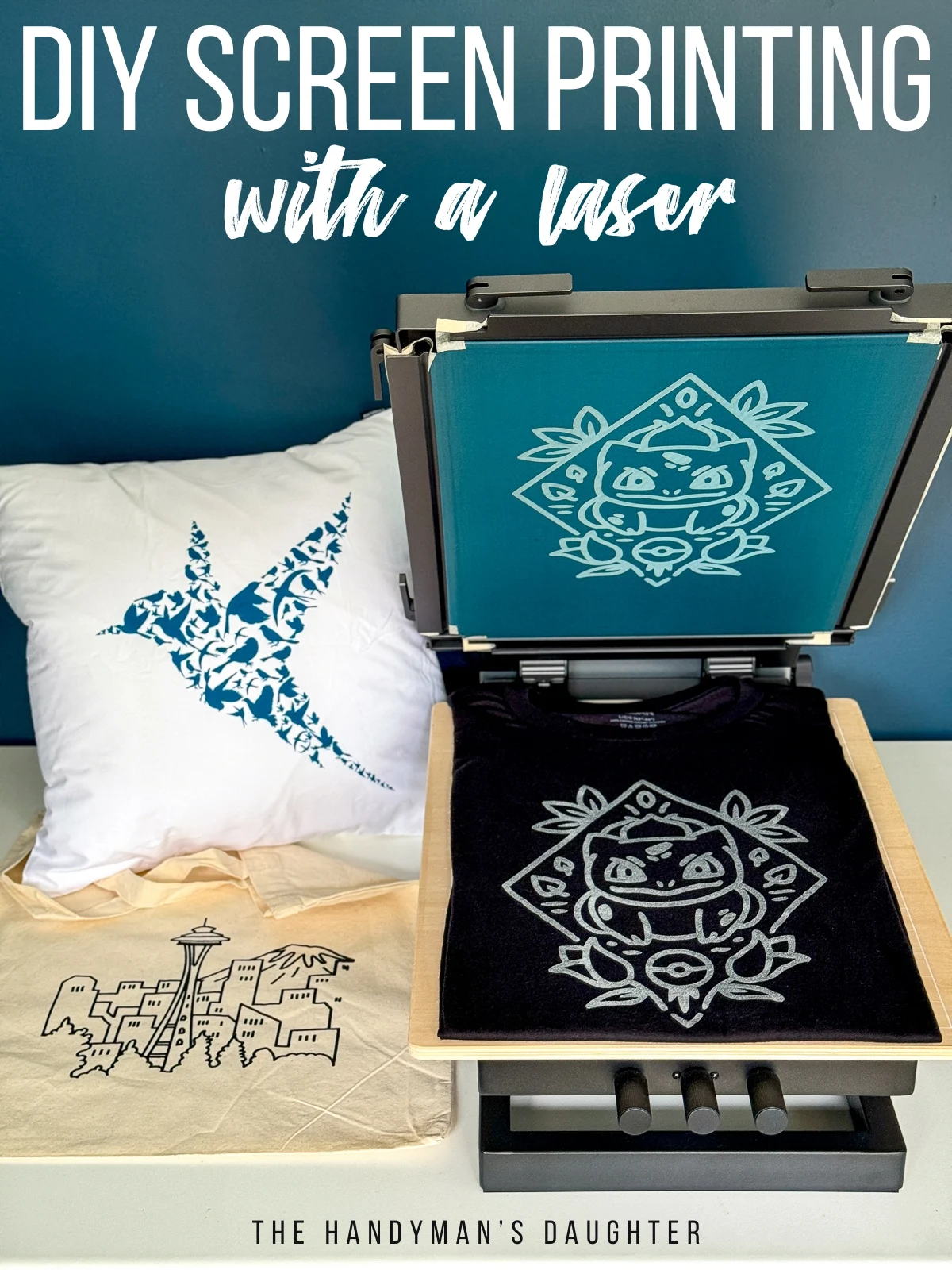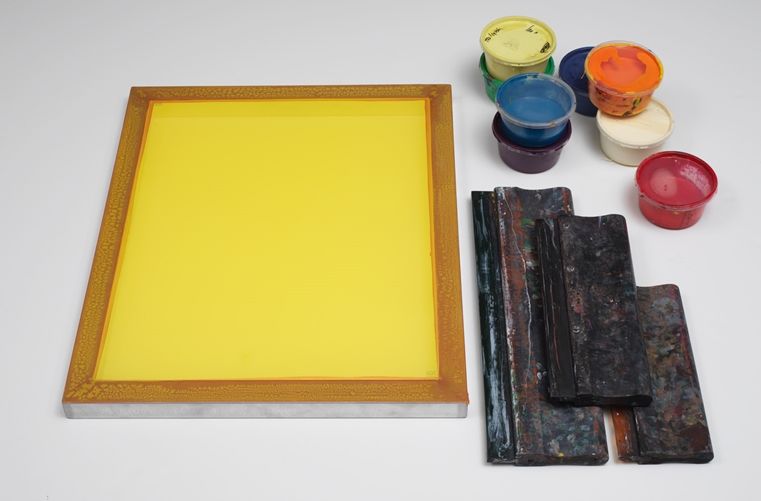ChatGPT said: How to customize your apparel with 10:9 Design Screen Printing in a simple process
Discover the Various Sorts Of Screen Printing Techniques for Your Following Task
Screen printing uses a diverse series of methods that can improve any kind of creative project. From traditional approaches like serigraphy to contemporary developments such as direct-to-garment printing, each method has its special benefits. Specialty choices, including environment-friendly and metallic inks, introduce even a lot more opportunities. Recognizing these strategies can substantially affect the final result. The difficulty lies in selecting the most suitable technique for particular needs and preferred results. What factors should one consider?

The Fundamentals of Screen Printing
Although screen printing might appear complex, it is basically an uncomplicated procedure that entails transferring ink through a mesh screen onto various surface areas. The strategy starts with the production of a pattern, which defines the style to be printed. This stencil is attached to a mesh screen, generally made from polyester or nylon. As soon as the pattern remains in place, ink is related to the screen and pushed through the mesh utilizing a squeegee, resulting in the preferred pattern being printed on the underlying material.
Screen printing can be carried out on a wide variety of substrates, including fabric, paper, and plastic, making it a versatile choice for numerous jobs. The process permits for lively shades and elaborate designs, making it prominent in markets such as advertising and marketing, art, and fashion. Recognizing these basics furnishes people with the fundamental knowledge required to discover advanced techniques in screen printing.
Traditional Screen Printing Techniques
Conventional screen printing strategies have been employed for centuries, preserving the workmanship and artistry of this method. This method utilizes a mesh screen to move ink onto a substratum, such as textile or paper, permitting vivid and long-lasting designs. The process begins with developing a pattern, which blocks certain locations of the screen to regulate where the ink will certainly be applied.
One prominent technique is serigraphy, typically utilized for limited versions and imaginative prints. Another is making use of water-based inks, which are environmentally friendly and supply a soft feel on textiles - 10:9 Design LLC Company. Additionally, traditional techniques can include hands-on printing, where artisans apply ink with a squeegee, ensuring accuracy and attention to detail
These strategies stay valued in the market for their responsive top quality and the distinct textures they produce, appealing to both customers and creators that value the heritage of screen printing.
Digital Screen Printing Innovations
As the demand for faster production and modification in the printing market has risen, electronic screen printing developments have actually become a game-changer. This innovation blends traditional screen printing techniques with electronic processes, enabling rapid prototyping and elaborate styles that were previously challenging to attain. One substantial innovation is the intro of direct-to-garment (DTG) printing, which promotes high-grade, full-color prints on various fabrics without the demand for screens. Additionally, improvements in ink formulations have actually led to environment-friendly choices that maintain vibrant shades while reducing ecological effect. Using automated systems even more simplifies manufacturing, decreasing labor costs and enhancing accuracy. These developments not only satisfy small batch orders and individualized layouts however also enable quicker turnaround times, making them optimal for services concentrated on conference customer needs in a busy market. Digital screen printing, as a result, stands for an important advancement in the domain name of printing techniques.
Specialty Screen Printing Techniques
Checking out specialty screen printing methods reveals a diverse range of strategies that press the borders of creativity and capability in the printing industry. Among these, glow-in-the-dark inks offer a special visual impact, making layouts come alive in low-light problems. Metal inks, known for their shimmering coating, include a touch of deluxe to printed materials. An additional cutting-edge method is discharge printing, which eliminates color from the material rather of adding ink, resulting in a soft, vintage feeling. High-density printing produces an increased texture externally, improving tactile interaction. Furthermore, water-based inks are acquiring popularity for their lively shades and lowered ecological influence. Each of these specialized methods accommodates particular design demands, enabling brand names and artists to create standout items that resonate with their audiences. By leveraging these approaches, businesses can boost their screen printing tasks to new heights, making sure memorable perceptions.
Eco-Friendly Screen Printing Options
Environment-friendly screen printing alternatives are acquiring traction as the industry shifts towards sustainability. Sustainable ink selections and making use of biodegradable materials are crucial elements in decreasing the ecological influence of the printing procedure. By taking on these practices, screen printers can add to a more sustainable future while keeping top quality outcomes.
Lasting Ink Choices

Biodegradable Materials Use
As the screen printing sector evolves, the incorporation of eco-friendly materials is becoming significantly important for environmentally conscious techniques. Developers and makers are currently exploring inks and substrates made from all-natural, sustainable resources that decompose much more successfully than typical equivalents. These eco-friendly alternatives decrease plastic waste and minimize environmental influence, lining up with the growing demand for lasting products.
Typical instances include water-based inks and organic cotton fabrics, both of which minimize unsafe chemicals and advertise eco-friendliness. Brands that take on these products commonly improve their market charm, attracting customers that prioritize sustainability. As awareness of ecological issues remains to rise, the change in the direction of biodegradable materials in screen printing is most likely to gain momentum, promoting a greener market criterion.
Choosing the Right Technique for Your Project
How can one identify the most appropriate screen printing strategy for a details project? The choice depends upon a number of variables, including the product to be printed on, the intricacy of the design, and the preferred production volume - 10:9 Design near me. For example, direct-to-garment printing is ideal for elaborate styles with many colors, while typical screen printing excels for bigger runs of less complex graphics
Furthermore, factor to consider of the end-use of the printed item is crucial. For outside applications, techniques that use sturdiness and weather resistance, such as plastisol ink, might be preferred. Alternatively, environmentally-conscious projects may gain from water-based inks or naturally degradable products.
Ultimately, understanding the project's distinct demands permits an informed selection, ensuring both aesthetic charm and useful durability. By assessing style intricacy, material compatibility, and production range, one can effectively choose the most appropriate screen printing method to satisfy their project's objectives.
Regularly Asked Questions
What Is the Background of Screen Printing?
Screen printing came from old China around 1000 AD, evolving via Japan and Europe. By the 20th century, it ended up being popular in industrial art and style, changing exactly how layouts website were generated and dispersed internationally.

Just how Do I Prepare Artwork for Screen Printing?
To prepare art work for screen printing, one have to assure high resolution, use an ideal color mode, develop different layers for every shade, and convert text to lays out, ensuring compatibility with the printing procedure and wanted outcome.
What Products Are Best for Screen Printing?
The very best materials for screen printing consist of premium inks, long lasting screens, and appropriate substratums like cotton, polyester, or blends. In addition, utilizing proper emulsion and squeegees can boost the printing procedure and results.
Can I Screen Publish at Home?
Yes, screen printing in your home is feasible. With the right products, setup, and techniques, individuals can produce top quality prints. However, careful consideration of workspace and equipment is important for effective results.

What Prevail Blunders in Screen Printing?
Usual mistakes in screen printing consist of improper exposure times, poor ink uniformity, imbalance of screens, not enough cleansing of materials, and neglecting to check prints. These mistakes can compromise the quality and accuracy of the end product.
Screen printing may appear complicated, it is fundamentally an uncomplicated process that involves transferring ink with a mesh screen onto numerous surfaces. As the demand for faster manufacturing and customization in the printing market has surged, digital screen printing developments have actually emerged as a game-changer. Exploring specialty screen printing techniques reveals a varied variety of strategies that push the borders of creative thinking and performance in the printing sector. The finest products for screen printing include high-grade inks, durable displays, and suitable substrates like cotton, polyester, or blends (10:9 Design Company). Common blunders in screen printing consist of inappropriate direct exposure times, inadequate ink uniformity, misalignment of displays, not enough cleaning of products, and disregarding to evaluate prints